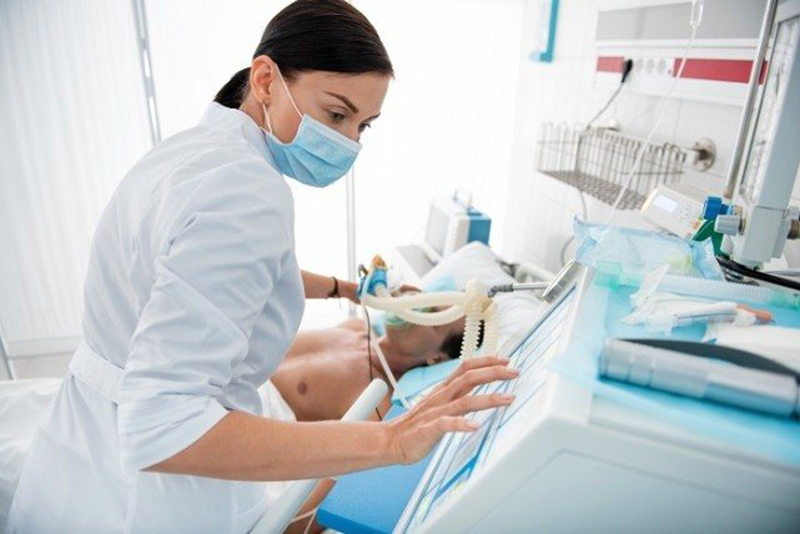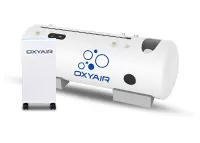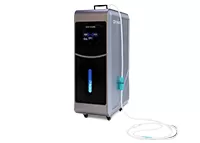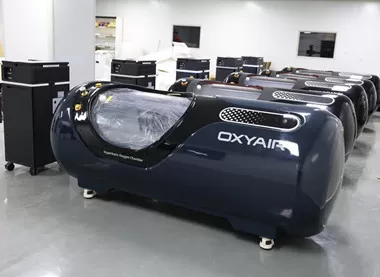Seven Tips For COPD Patients With Difficulty Breathing and Lung Discomfort Breathe Smoothly
Chronic obstructive pulmonary disease (COPD) makes it difficult for patients to breathe, and patients and physicians need to consider: Is breathing difficult enough to require oxygen therapy?
This treatment works by giving the patient extra oxygen to make breathing easier and more energetic. Even if a patient does not need oxygen therapy temporarily, it may be needed in the future.
The small air sacs in the lungs of people with COPD have been damaged, so less air is inhaled and exhaled.
COPD can also occur when the airways become inflamed or when the airways secrete too much mucus and become blocked.

There is currently no cure for the disease, but it can be treated.
1. How does oxygen therapy work?
The therapy is to get more oxygen into the lungs, what doctors or nurses call "supplemental oxygen."
When a patient receives oxygen therapy, the following methods can be used.
Catheter: A nasal oxygen cannula is used to inhale oxygen through the nose. This device consists of two small tubes inserted into the nostrils and a long tube connected to an oxygen tank. This is the most common method of oxygen therapy.
Mask: Cover the nose and mouth with a mask for patients who need more oxygen and are not suitable for a nasal oxygen tube.
Surgery: In very severe cases, the surgeon will make a hole in the patient's windpipe, then connect one end of a tube to an oxygen tank and the other end through a small hole in the patient's neck into the windpipe. This is called an endotracheal intubation.
oxygen tank.
Small oxygen tanks can be carried with you, and there are large oxygen tanks that you keep at home.
If the patient is receiving oxygen therapy, it can be arranged to send an oxygen tank to the home, which can filter other gases so that the patient only inhales oxygen.
Patients can also receive oxygen therapy in the hospital.
2.The benefits of treatment
Inhaling more oxygen can make breathing easier and help patients sleep better. Also:
Strengthen physical fitness.
Improve concentration.
Improve mood.
Improve the quality of sexual life.
Reduces the likelihood of heart failure (insufficient blood supply to the heart).
May prolong life.
3.The possible complications
The biggest hazard of oxygen therapy is fire, if the patient is being treated at home, or outdoors with a portable oxygen tank:
Keep at least 1.5 meters away from open flames.
Do not smoke or be near smokers.
Do not bring oxygen tanks into confined spaces.
There are some side effects of oxygen therapy:
The skin around the mask or nasal oxygen tube may be irritated.
The inside of the nose may become dry.
There may be occasional nosebleeds.
When you wake up in the morning, you may experience fatigue or a headache.
In some cases, these side effects can be avoided by adjusting the amount of oxygen inhaled, and fewer treatments can be helpful.
But you need to consult your doctor beforehand, if there is a problem, you may need to replace the device, and if you have dry skin, you can put a humidifier in the room.
4. Which patients need to receive oxygen therapy?
Oxygen therapy may be considered in patients with COPD if their condition worsens.
Doctors may order tests to evaluate a patient's lung function. The tests include measuring the oxygen level in the patient's blood. Two common blood oxygen tests include:
Arterial blood gas analysis: This is a standard blood test that involves drawing some blood from the patient's arm and then testing the oxygen levels in the blood in a laboratory.
Blood oxygen test: This test is very different from arterial blood gas analysis in that the patient wears a special device on the finger that emits light through the patient's skin.
The amount of oxygen in the blood is determined by the amount of light absorbed by the oxygen-carrying red blood cells.
5. What situations require oxygen therapy?
Oxygen therapy may be needed if the test results show that the oxygen levels in the patient's blood are lower than healthy levels. Sometimes, this is only a temporary solution, and the patient may have a COPD attack or an infection that is causing poor breathing.
Sometimes a patient may only need to be treated while they are sleeping, or only when they are physically active, or only when an infection develops.
If the condition continues to worsen, the patient may need to receive oxygen therapy 24 hours a day, and the doctor will tell the patient how long the oxygen needs to be inhaled each day in the prescription, and the amount of oxygen inhalation will also be included.
6.The prognosis of the patient
COPD is a progressive disease, which means it usually gets worse over time.
If the patient smokes, then smoking cessation will help maximize the effect of treatment, and stopping smoking can slow the progression of COPD.
Oxygen therapy can at least relieve dyspnea and partially restore the patient's quality of life. If you feel that your breathing is gradually smoother, please inform your doctor, and the duration of oxygen therapy may be appropriately shortened.
Do not stop oxygen therapy or make changes without first talking to your doctor.
7. Oxygen levels are too low or too high
If the oxygen level is too low or too high, it can lead to some serious health problems. Too low oxygen levels can damage a patient's heart and brain, and too high oxygen levels can cause a patient to breathe very slowly.
Oxygen therapy can relieve dyspnea when managed properly, and by being able to carry a small oxygen tank with you, patients can do more and enjoy a normal life, even if it is a severe lung disease.














